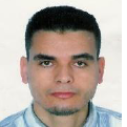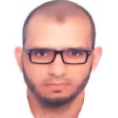International Journal of Education and Management Engineering (IJEME)
IJEME Vol. 14, No. 3, 8 Jun. 2024
Cover page and Table of Contents: PDF (size: 855KB)
The Effect of Two Computer Simulations on Learning Quantum Measurement Concepts
PDF (855KB), PP.1-12
Views: 0 Downloads: 0
Author(s)
Index Terms
Quantum concepts, Computer simulation, Understanding, Visualization, Learning
Abstract
The majority of undergraduate students finddifficulty to understand the concept of postulates of quantum mechanics, precisely the postulates of measurement, reduction and evolution. Here, we include In this context we propose a pedagogical innovation technique based on the integration of two simulation projects of Quvis and Quilts. Then, we assess the student's understanding capacity. Here, Our results demonstrate , that the explanation of the postulates of quantum mechanics by manipulating the two simulations by the experimental group , For evaluated our pedagogical innovation , a pre-test and a post-test were administered for two experimental and control groups; the pre-test is composed of 19 multiple choice questions, and the post-test is composed of 12 questions for two groups, one using the simulations during quantum mechanics lectures and the other group learned the course of quantum mechanics without using simulations. A statistical analysis of the results showed that the distribution of pre-test results of the experimental group wasn't normal. In contrast, the distribution of the results of the control group was normal, so the Mann-Whitney U Test analysis showed that there is no difference between the results of the two groups in the pre-test, which shows the homogeneity of the two groups. The distribution of the post-test results of the two groups is normal, so the T-test analysis showed that there is a difference between the results of the two groups, with the average of results of the control group is 7.4, and of the experimental group is 11.4, the comparison of the pre-test and post-test results of the experimental group shows that there is a significant increase in the students' results after the integration of two simulations. The analysis of the results of the quiz showed that there was a significant improvement in understanding of the concepts of measurement and evolution in the group that benefited from the use of the simulations.
Cite This Paper
Khalid Ait Bentaleb, Saddik Dachraoui, Taoufik Hassouni, Aimad Belboukhari, El Mehdi Alibrahmi, "The Effect of Two Computer Simulations on Learning Quantum Measurement Concepts", International Journal of Education and Management Engineering (IJEME), Vol.14, No.3, pp. 1-12, 2024. DOI:10.5815/ijeme.2024.03.01
Reference
[1]Z.Toffano, “Intrication quantique: mythe ou réalité?”Revue Française de Systémique, 2015.
[2]S. Gambs, “Apprentissage quantique,” doctorate’s thesis University of Montréal, 2008.
[3]D. A. Muller, “Inside the quantum mechanics lecture: Changing practices,” presented at 28th Higher Education Research and Development Society of Australasia Annual Conference, The University of Sydney Australia, 3-6 July 2005.
[4]I. D. Johnston, K. Crawford, and P. R. Fletcher, “Student difficulties in learning quantum mechanics,”International Journal of Science Education, vol.20, no. 4, pp. 427-446, 1998.
[5]H. R. Sadaghiani, “Conceptual and mathematical barriers to students learning quantum mechanics,” doctorate’s thesis, The Ohio State University, 2005.
[6]M. Ayene, J. Kriek, and B. Damtie, “Wave-particle duality and uncertainty principle: Phenomenographic categories of description of tertiary physics students ’ depictions,” PHYSICAL REVIEW SPECIAL TOPICS - PHYSICS EDUCATION RESEARCH, vol. 7, pp1–13, 2011.
[7]L.Bao, E. F.Redish, , and E. F. Redish, “Understanding probabilistic interpretations of physical systems : A prerequisite to learning quantum physics Understanding probabilistic interpretations of physical systems : A prerequisite to learning quantum physics,”American Journal of Physics, vol. 70, no, 3, pp. 210–217, 2002.
[8]K. Cataloglu, “Development and validation of an achievement test in introductory quantum mechanics: the quantum mechanics visualization instrument (QMVI),” doctorate’s thesis The Pennsylvania State University, 2002.
[9]E., Gire, and C. Manogue, “Making sense of quantum operators, eigenstates and quantum measurements,” In Proc. AIP Conference Proceedings, pp. 195–198. 2012.
[10]K. Krijtenburg-Lewerissa, H. J. Pol, A.Brinkman, and W. R. Van Joolingen, “Insights into teaching quantum mechanics in secondary and lower undergraduate education,”Physical Review Physics Education Research, vol. 13, no, 1. 2017.
[11]E.Marshman, and C. Singh, “Framework for understanding the patterns of student difficulties in quantum mechanics,”Physical Review Special Topics - Physics Education Research, vol.11, no. 2, pp. 1–26, 2015.
[12]M.Oldache, C.Khiari, “Représentations d’apprenants relatives aux concepts quantiques,” Educational Journal of the University of Patras UNESCO Chair, vol. 2, no. 1, pp. 184-197, 2015
[13]M.Oldache, C.Khiari, “Ce que nous apprend l’histoire des sciences à propos du concept de fonction d’onde et impact sur l’enseignement de la physique quantique,” Educational Journal of the University of Patras UNESCO Chair, vol. 3, no. 2, pp. 287-296, 2016.
[14]G.Sezgin Selçuk, and S. Çalýskan, “Student Understanding of Some Quantum Physical Concepts,”Latin-American Journal of Physics Education, vol. 3, no. 2, pp. 202–206, 2009.
[15]C. Singh, “Student understanding of quantum mechanics,” American Journal of Physics, vol. 69, no. 8, pp. 885–895, 2001
[16]W.Christian, M.Belloni, F.Esquembre, B. A.Mason, L.Barbato, and M. Riggsbee, “The Physlet approach to simulation design,” The Physics Teacher, vol. 53, no. 7, pp. 419-422. 2015.
[17]C.Singh, and E. Marshman, “Review of student difficulties in upper-level quantum mechanics,”Physical Review Special Topics-Physics Education Research, vol. 11, no. 2,pp. 1–24, 2015.
[18]C. Singh, and G. Zhu, “Surveying students’ understanding of quantum mechanics,” In Proc. AIP Conference Proceedings, 1289, 301–304, 2010.
[19]D. F. Styer, “Common misconceptions regarding quantum mechanics,”Americain Journal of Physics, vol. 64, 31-34, 1996.
[20]G.Zhu, and C. Singh, “Improving students’ understanding of quantum measurement. II. Development of research-based learning tools,” Physical Review Special Topics - Physics Education Research, vol. 8, no. 1, 2012.
[21]L. R.Aiken, “Intellective variables and mathematics achievement : directions for research,”Journal of School Psychology,vol . 9, no. 2, pp. 201–212. 1971.
[22]C.Bayrak,“Effects of computer simulations programs on university students’ achievments in physics,”Turkish Online Journal of Distance Education, vol. 9, no. 4, pp. 53–62, 2008.
[23]K.Chang, , Y.Chen, , H.Lin, , and Y.Sung, “Effects of learning support in simulation-based physics learning,”Computers and Education. vol. 51, pp. 1486–1498. 2008
[24]P.Shadaan, and L. K.Eu, “Effectiveness of Using Geogebra on Students ’ Understanding in Learning Circles,”Malaysian Online Journal of Educational Technology. vol. 1, no. 4,pp. 1–11. 2013
[25]C. J.Brigas, “Modeling and Simulation in an Educational Context: Teaching and Learning Sciences,” Research in Social Sciences and Technology. vol. 4, no. 2, pp. 1–12. 2019
[26]S. B. McKagan, K. K. Perkins, M. Dubson, C.Malley, S. Reid, R. LeMaster, and C. E. Wieman, “Developing and researching PhET simulations for teaching quantum mechanics,” American Journal of Physics vol. 76 no. 4, pp. 406–417, 2008.
[27]C. Singh, “Interactive learning tutorials on quantum mechanics,”American Journal of Physics, vol.76, pp. 400, 2008.
[28]A.Kohnle, , C.Baily, A.Campbell, , N.Korolkova, and M. J. Paetkau, “Enhancing student learning of two-level quantum systems with interactive simulations,” American Journal of Physics, vol. 83, no. 6, pp. 560–566, 2015
[29]S. Zaman Ahmed, , J. H. M.Jensen, C. A. Weidner, J. J.Sørensen, M.Mudrich, , and J.Friis Sherson, “Quantum composer: A programmable quantum visualization and simulation tool for education and research,”American Journal of Physics , vol. 89, pp. 307, 2021.
[30]M.Belloni, and W.Christian, “Physlets for quantum mechanics,” Computing in Science & Engineering, vol. 5, no. 1, pp. 90–97, 2003.
[31]G. J. Kelly, R. E. Mayer, S., Editors, G. Kalkanis, P. Hadzidaki, and D. Stavrou, “An Instructional Model for a Radical Conceptual Change Towards Quantum Mechanics Concepts,” Learning.257–280. 2002
[32]P.Hadzidaki, G.Kalkanis, and D. Stavrou, “Quantum mechanics: A systemic component of the modern physics paradigm,”Physics Education, vol. 35. No. 6, pp. 386–392, 2000.
[33]A.Kohnle, D.Cassettari, T. J.Edwards, C.Ferguson, , A. D.Gillies, C. A.Hooley, N.Korolkova, J.Llama, and B. D. Sinclair, “A new multimedia resource for teaching quantum mechanics concepts,” American Journal of Physics, vol. 80, no. 2, pp. 148–153, 2012




